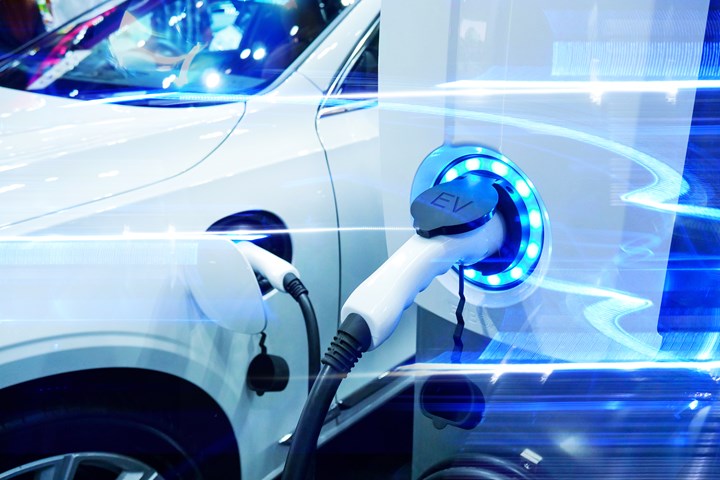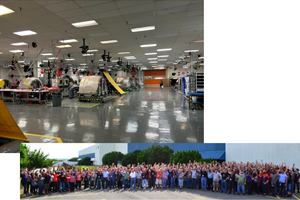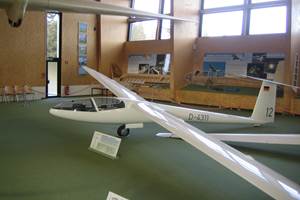
Photo Credit: Getty Images
One key climate action goal enacted by global leaders to mitigate the adverse effects of climate change is the switch from gasoline-powered vehicles to electric vehicles (EVs). With vehicles contributing to almost a third of global emissions, the solution may provide some level of relief. In recent years, growth of EVs has seen an upward trajectory, and they have received an unequivocal response from customers worldwide. Globally, several countries have set ambitious targets to add EVs to their fleets, which would result in EVs holding 32% of total automobile sales globally by 2030.
Though showing promising emissions reduction advantages, there are clearly several challenges that have restricted the widespread adoption of EVs so far by consumers. The first and most prevalent challenges are with range limits and concerns about vehicle value that customers associate with current EVs on the market. As per a survey by Alix Partners (2019), 67% of customers are looking for an EV that is cost equivalent to a gas-powered vehicle.
A second major challenge is the limited charging infrastructure available, as most existing charging stations are concentrated in select regions. According to the Alix survey, 57% of consumers are uninterested in EVs due to lack of access to charging. Though western countries have been active in bridging this gap, it seems the east has been left far behind, with the exceptions of China, Japan and South Korea. On average, more than 100 vehicles per day visit a gas station for refueling, as compared to approximately 10-20 vehicles per day to a charging station (Green Car Reports). The speed of charging is also an issue, and cannot yet compare with the speed of refueling a gas-powered vehicle. Safety problems and the risk of thermal runaway with traction batteries are also concerns.
Overcoming these challenges will certainly take time; however, composite materials are playing a role in several developments taking place to ensure greater vehicle efficiency through lightweighting. Here, we will look more closely at developments for several components: vehicle drivetrain, battery modules, motor, inverter and converter.
The interplay of weight and efficiency
To increase the efficiency of any vehicle, one of the first strategies often considered is to reduce the weight of the overall system. Vehicle lightweighting can be traced back to as early as the 1900s, when aluminum made inroads in the automobile industry and replaced steel in a majority of vehicle components, including the body of the vehicle. However, with EVs, we will see a lot of these changes happen in under the hood (UTH) components, especially in multiple powertrain components, because of safety and technocommercial factors such as high-volume production, cost reduction per part and meeting performance criteria by lightweight materials. Further, research funded by the Aluminum Assn. (Arlington, Va.) shows that vehicles with lightweight structural components (composites or aluminum) and less powerful/expensive batteries can have a range similar to those with heavy EV stainless steel components and more powerful/expensive batteries.
Battery modules. The most interesting developments can be seen in battery modules, or enclosures, where composites have become quite popular. Conventional EV batteries weigh more than 400 kilograms, with a metallic module that weighs 100 kilograms. Several industry leaders are using composites to reduce weight in the battery module, including BMW (Munich, Germany) which has partnered with SGL Carbon (Meitingen, Germany) for supply of carbon fiber composites for its battery modules. Companies such as TRB Lightweight Structures (TRB, Huntingdon, U.K.) also are making a lot of noise in this segment with improved structural design for lightweight solutions. TRB reported a recent development that reduced module weight from 80 kilograms to 10 kilograms with increased strength and flame retardancy.
Though steel and aluminum manufacturers are also pushing their own lightweight designs, composites have a major advantage in meeting flame retardancy requirements and reducing the risk of thermal runaways with a push toward fast charging. Cost has always been a bottleneck for composites; however, now that composites-related suppliers are becoming more integrated into automotive supply chains, from the production of resin through to the production of the structure, we are starting to see significant cost savings.
Motor and electrical components. The motor accounts for significant vehicle weight. Thus, weight can certainly be optimized with the help of a selection of appropriate materials, design and electrical component integrations. Currently, companies such as Hofer (Nürtingen, Germany) and Hyliion (Cedar Park, Texas, U.S.) are focusing on design and development of e-axles, which features a motor combined with a converter/inverter with minimal use of high-voltage cables. This will certainly reduce high-voltage cable weight along with the enclosure weight of inverter/converter since this will be installed inside the e-axle enclosure. However, challenges including lack of investments and collaboration across the value chain are prominent, leading to e-axle technology that may not be able to meet OEM power and cost requirements.
In the future, we can anticipate having more composites component suppliers, collaborations and economy of scale for composite parts.
Additionally, German-based universities Fraunhofer Institute for Chemical Technology (ICT, Pfinztal) and Karlsruhe Institute of Technology (KIT) are working together to develop hybrid metal-based composites using thermoset polymers that offer higher thermomechanical stability and meet the rigidity requirements of motor enclosures. However, dimensional stability at higher temperature and cooling the motors are the main challenges for commercialization. Plastics may not offer sufficient thermal conductance and homogeneous heat distribution. Redesign of cooling channels can certainly improve the heat management of motors, but will take about five to eight years to develop, test and commercialize. Meanwhile, composites are being developed by Tesla and others for the rotor housing, stator and other components in electric motors, reportedly enabling new levels of performance and showing potential for commercial-scale implementation in these types of applications.
As noted, one of the biggest concerns about fast recharging is the risk of thermal runaway. In response, several automotive manufacturers are working on designing their battery packs with systems designed to deal with thermal runaway incidents. There are three levels of protection that engineers are simultaneously working on: cell-to-cell, module-to-module and battery pack level protections. Adding any of these protections is likely to add weight, reduce vehicle range and require already limited space already. However, a notable development by coating suppliers may offer an innovative solution. They have developed technologies at the cell/module level to stop/delay fire spread in case of a thermal event. These intumescent coatings on composites will certainly help to improve fire protection, weight reduction and space savings. It is important to note, however, that global regulations are not yet in place, and it is up to the OEMs and their internal risk assessment programs to determine how likely it is for thermal runaway to occur.
Interior and exterior structural components. For weight reduction, the integration (reduction in number of components and change in designs) of the interior as well as exterior structural components could be crucial. Composites will play a key role, though adoption at large scale could be limited or delayed due to challenges such as higher material costs and the complexity of parts manufacture. Moreover, there is a mismatch between target costs set by OEMs, component dimensions/orientations, scalability and manufacturing processes; thus, currently, composites are struggling to meet the desired cost and performance benchmark for many components. A few emerging opportunities for composite components include A, B and C pillars, roof and underbody panels, and door and side frames, among others.
Moving forward
From a consumer perspective, for the time being, it is unlikely that demand for EVs will rise above those of traditional gas-powered vehicles. In fact, the rate of adoption of EVs depends on government incentives, initiatives and investments. Further, we predict the adoption of composites will be mostly to premium segment cars in structural components, due to high unit costs and issues with economy of scale; however, there is an opportunity for composites use in major components such as battery enclosures and some motor sub-components, among others (across all car segments), where we can expect more penetration in the next three to five years. For larger structural components, composites may have to wait for 10 or more years before the industry starts focusing on replacement of high-strength steel and aluminum. Moreover, in the future, we can anticipate having more composite component suppliers, collaborations and economies of scale for composite parts.
About the Author
Vikash Kumar
ChemBizR (Gurgaon, India) is a boutique business research and consulting partner of chemical companies globally, and is involved in addressing companies’ critical business challenges and strategic growth initiatives to help them transform their enterprise for sustainable growth in a highly competitive and rapidly evolving environment. Leveraging his experience in research and consulting for global chemical companies, Kumar serves as project lead for the Polymers and Materials Division at ChemBizR, supporting clients by providing critical end-to-end insights for business transformation solutions.
Related Content
Augmenting engineered thermoplastics with natural fibers
The Paris Climate Accord mandate for net-zero carbon by 2050 has kick-started an innovation revolution for natural fibers and sustainably engineered resins.
Read MoreComposites opportunities in eVTOLs
As eVTOL OEMs seek to advance program certification, production scale-up and lightweighting, AAM’s penetration into the composites market is moving on an upward trajectory.
Read MoreCreating a culture of excellence in aerocomposites
ST Engineering MRAS discusses the importance of addressing human factors to reduce separator inclusion in bonded structures.
Read MoreFrom sailplanes to composites repair: Growing composite training opportunities over the years
Mike Hoke discovered his interest in the composites industry at a young age. His journey eventually led him to Abaris Training Resources, which he owned and evolved for more than 30 years.
Read MoreRead Next
Composites end markets: Energy (2024)
Composites are used widely in oil/gas, wind and other renewable energy applications. Despite market challenges, growth potential and innovation for composites continue.
Read MoreCW’s 2024 Top Shops survey offers new approach to benchmarking
Respondents that complete the survey by April 30, 2024, have the chance to be recognized as an honoree.
Read MoreFrom the CW Archives: The tale of the thermoplastic cryotank
In 2006, guest columnist Bob Hartunian related the story of his efforts two decades prior, while at McDonnell Douglas, to develop a thermoplastic composite crytank for hydrogen storage. He learned a lot of lessons.
Read More











.jpg;maxWidth=300;quality=90)

















